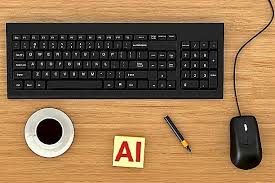
Microsoft Envisions a Future Windows Where AI Agents Replace Keyboard and Mouse

 :
| Updated On: 07-Aug-2025 @ 4:17 pm
:
| Updated On: 07-Aug-2025 @ 4:17 pmSHARE
Microsoft recently released a video titled Windows 2030 Vision on YouTube, offering a bold look into the future of computing. The video explores how Artificial Intelligence (AI) is expected to redefine the way users interact with Windows operating systems within the next five years. At the core of this vision is the move away from traditional input tools like the keyboard and mouse in favor of more natural, AI-driven interactions.
David Weston, Microsoft’s Corporate Vice President of Enterprise and OS Security, opens the video by comparing the future of computing to how Generation Z perceives DOS—outdated and unfamiliar. He predicts that by the year 2030, traditional methods such as typing and mouse navigation will become nearly obsolete. Instead, users will rely heavily on voice commands and conversations with their devices. Weston describes this future form of communication as far more natural and intuitive.
Microsoft envisions a multi-modal version of Windows that allows users to interact with their computers through speech, hand gestures, or even eye-tracking. The idea is that users will be able to simply look at an item on the screen and issue a voice command for the system to respond accordingly. This level of interaction may sound like science fiction, but Microsoft is investing heavily in making it a reality. The company has been incorporating its AI assistant, Copilot, into various products, including Windows and Microsoft Office.
Copilot, Microsoft’s AI-powered chatbot, plays a central role in this vision. The video showcases a new feature where users can activate Copilot by saying “Hey Copilot,” similar to using voice assistants like Siri or Alexa. Copilot can then perform a wide range of actions, such as adjusting system settings, retrieving online information, or managing files. This hands-free functionality represents a major shift in user experience, making computing more accessible and efficient.
Weston also discusses the transformative impact of AI on cybersecurity. He predicts that AI will enable users, including small and medium business owners, to “hire” virtual security experts. These AI agents would provide professional-grade protection and interact with users just like a human expert would. This could democratize cybersecurity services, which are currently often out of reach for smaller companies due to cost and complexity.
The AI revolution, as described in the video, goes beyond user interfaces and security. Weston suggests that AI will eliminate the need for repetitive, time-consuming tasks such as generating spreadsheets or creating expense reports. Automating such processes could free up substantial amounts of time, allowing users to focus on more meaningful and creative work.
In summary, Microsoft’s Windows 2030 Vision paints a compelling picture of an AI-first computing era. By replacing traditional hardware interfaces with voice, gestures, and eye-tracking, and integrating AI agents into the core of Windows, the company aims to redefine productivity and user interaction. This future promises not only enhanced accessibility and security but also a profound change in how we perceive and use technology in our daily lives.